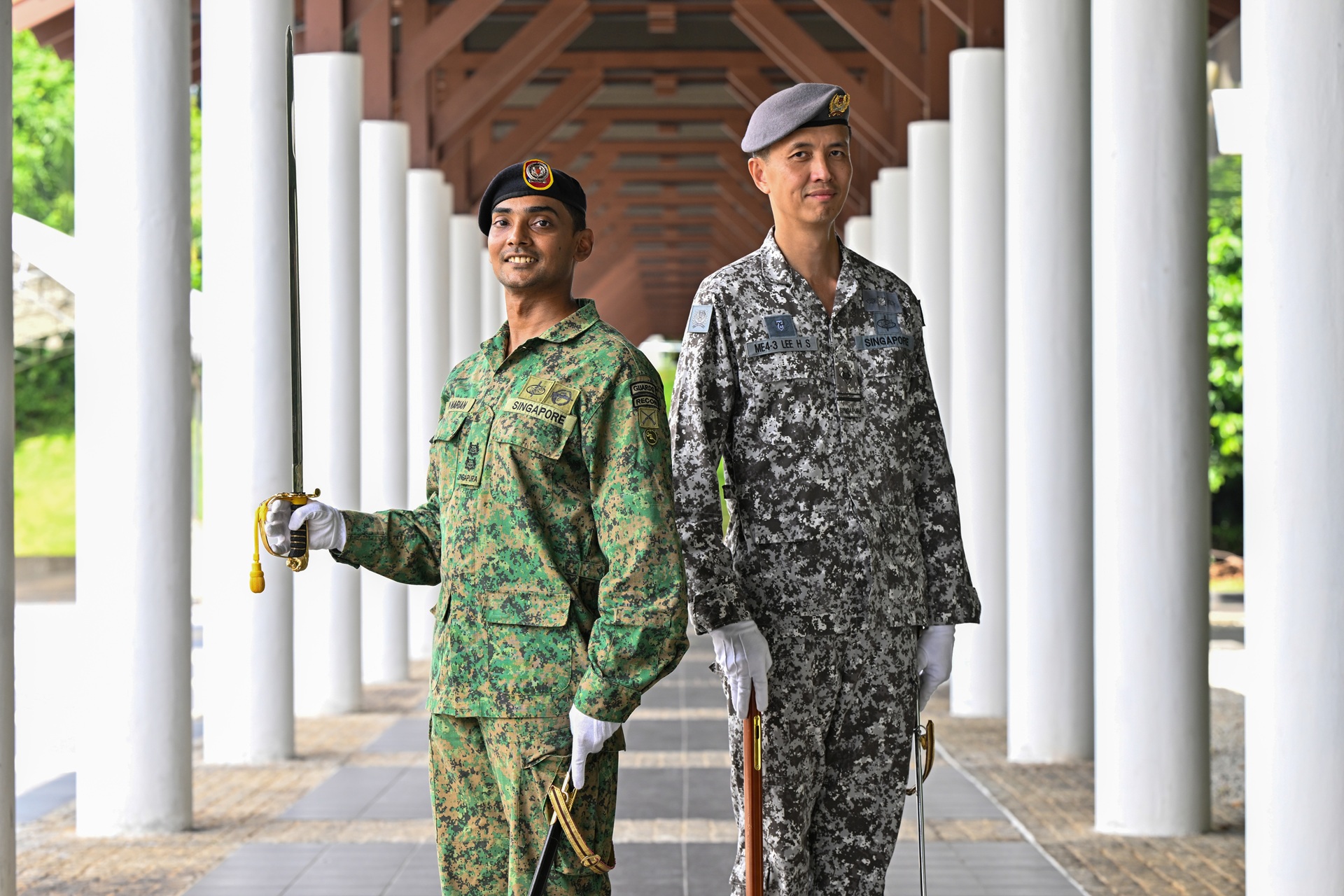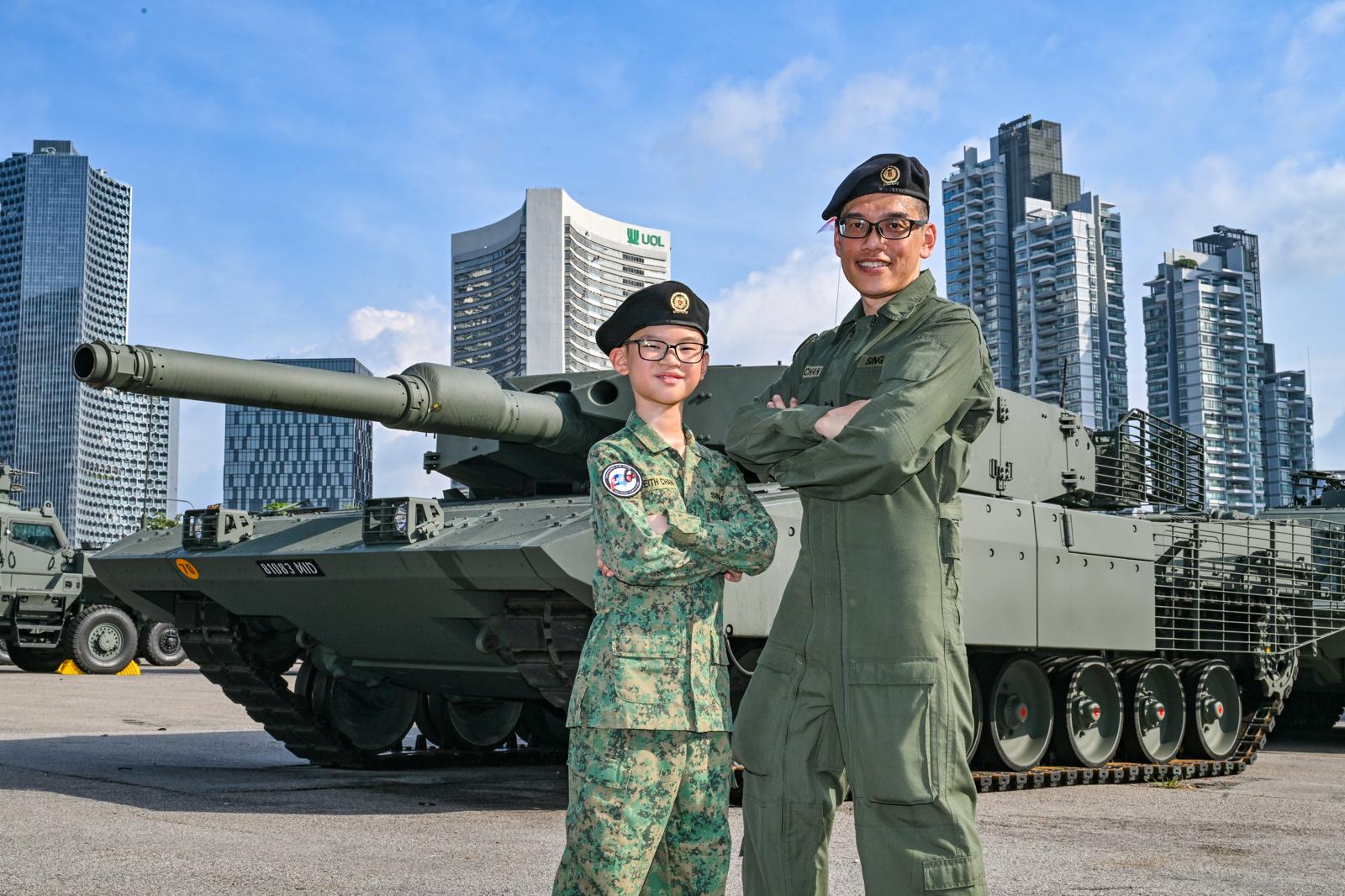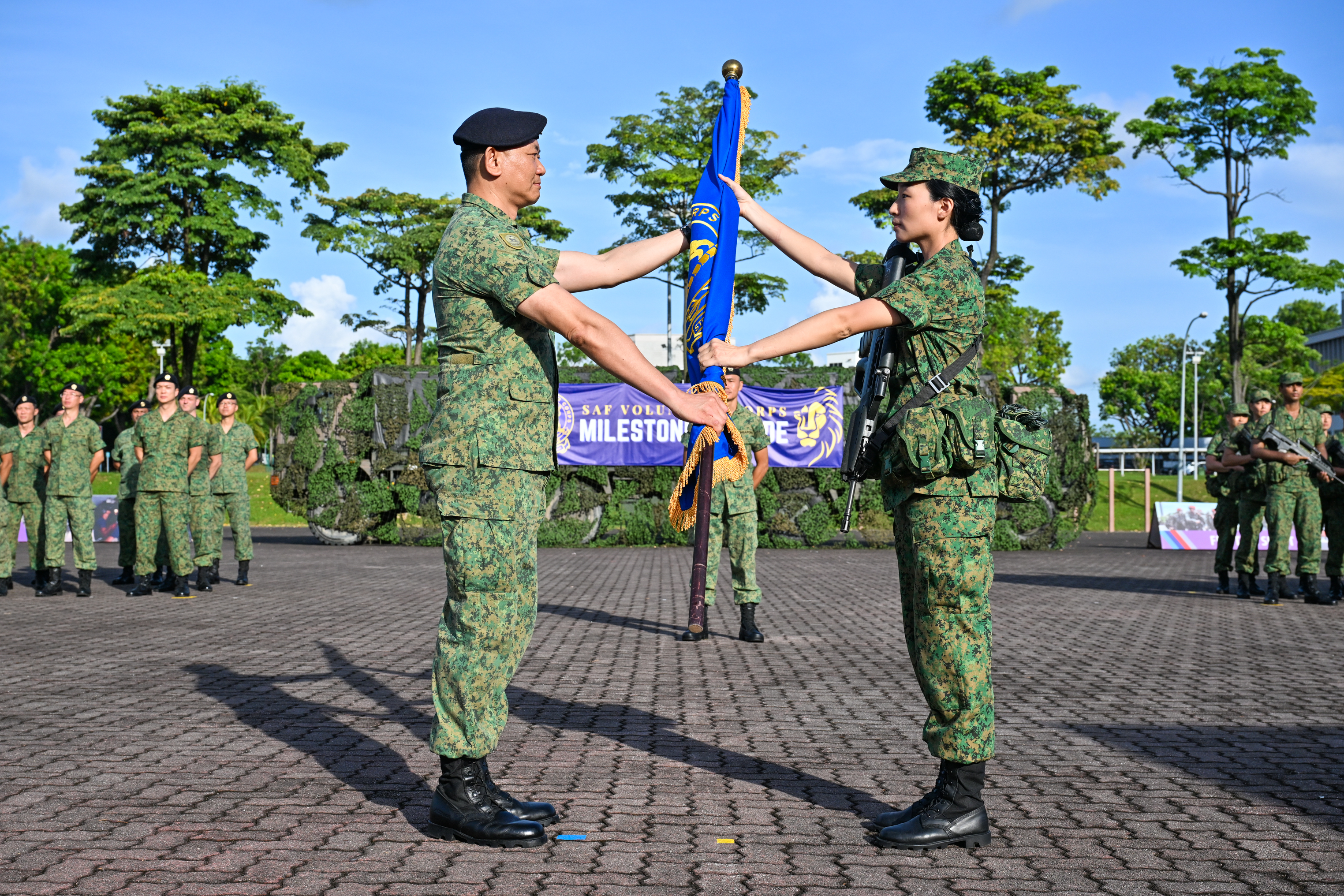FOR THE LOVE OF F1
PHOTO // Timothy Sim and courtesy of Singapore GP
2nd Sergeant (NS) Jackson Lim enjoyed being in the thick of the action at Singapore s first Formula One (F1) race last year so much that he will be back for more this year.
PIONEER: What made you sign up again this year?
JACKSON: The same reasons that made me sign up last year! I've been a fan of fast cars since I was young, and that eventually evolved into a love for motor sports. So when Singapore announced that we would be hosting an F1 race, I jumped straight in when they began recruiting for marshals last year.
My greatest takeaway from the whole experience has been meeting other volunteers who are all motor sports enthusiasts. We have fostered great friendships by watching the race together and discussing motor sports related incidents. I would like to volunteer my services every year!
PNR: What role do you play as a race official?
JL: I was a Flag Marshal last year, so I had to be trained in the use of the various flags and the electronic DigiFlag system.
This year, I'm a Deputy Sector Marshal. That means being responsible for a whole sector, with flag marshals, observers, track marshals and fire marshals under my care. Besides looking after their welfare and ensuring that everyone 's doing their job, I communicate and coordinate with Race Control when sending marshals out onto the track.
PNR: Can you share with us what it takes to get the job?
JL: To be a race official, you must love motor sports and have an understanding wife.
All of us are volunteers, so it's our passion for the sport that drives us on during the weekend trainings. Even though it's a night race, marshalling duties start at 12 noon, as we need to be around while the support races are going on. These are other races that take place throughout the day as a prelude to the F1 night race.
I'm also lucky to have an understanding wife who also loves motor sports. If she didn't have to take care of our two babies at home, she would definitely join me and volunteer to be a marshal as well. My bosses are also very supportive of my involvement, and frequently ask me how my training is going and if I need any extra time off.
PNR: What has been the most exciting part of your F1 experience so far?
JL: No two races are the same, so every race I've attended was exciting. But the most memorable thing happened when some of us went for overseas training at the Clipsal 500 Race held in Adelaide in March. A three-car pile-up accident happened right in front of me at Turn 4 during the race. One car went out of control, and the drivers of the two cars behind couldn't brake in time, so all three hit the wall. I had to activate all the marshals in my sector to clear the track and recover the cars quickly and safely.
PNR: What advice would you give to aspiring volunteers?
JL: Don't wait. Sign up when the next chance comes. You don't know what you re missing till you re at the trackside!
1. Race officials nearest to the accident will assess how bad it is and whether the car can still be driven off the track.
2. A track marshal will signal to the driver to verify if he is well.
3. If the driver does not react, the track marshal will check on his condition.
4. If the driver is injured, the First Intervention Vehicle (FIV) will be deployed onto the track. The medics and doctors in the FIV will then attend to the driver.
5. The tow truck will then be activated to remove the car, and track marshals will be sent to clear away debris, and to soak up any oil that may be left on the track.
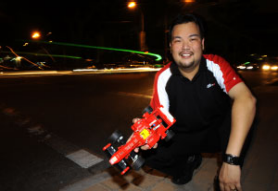
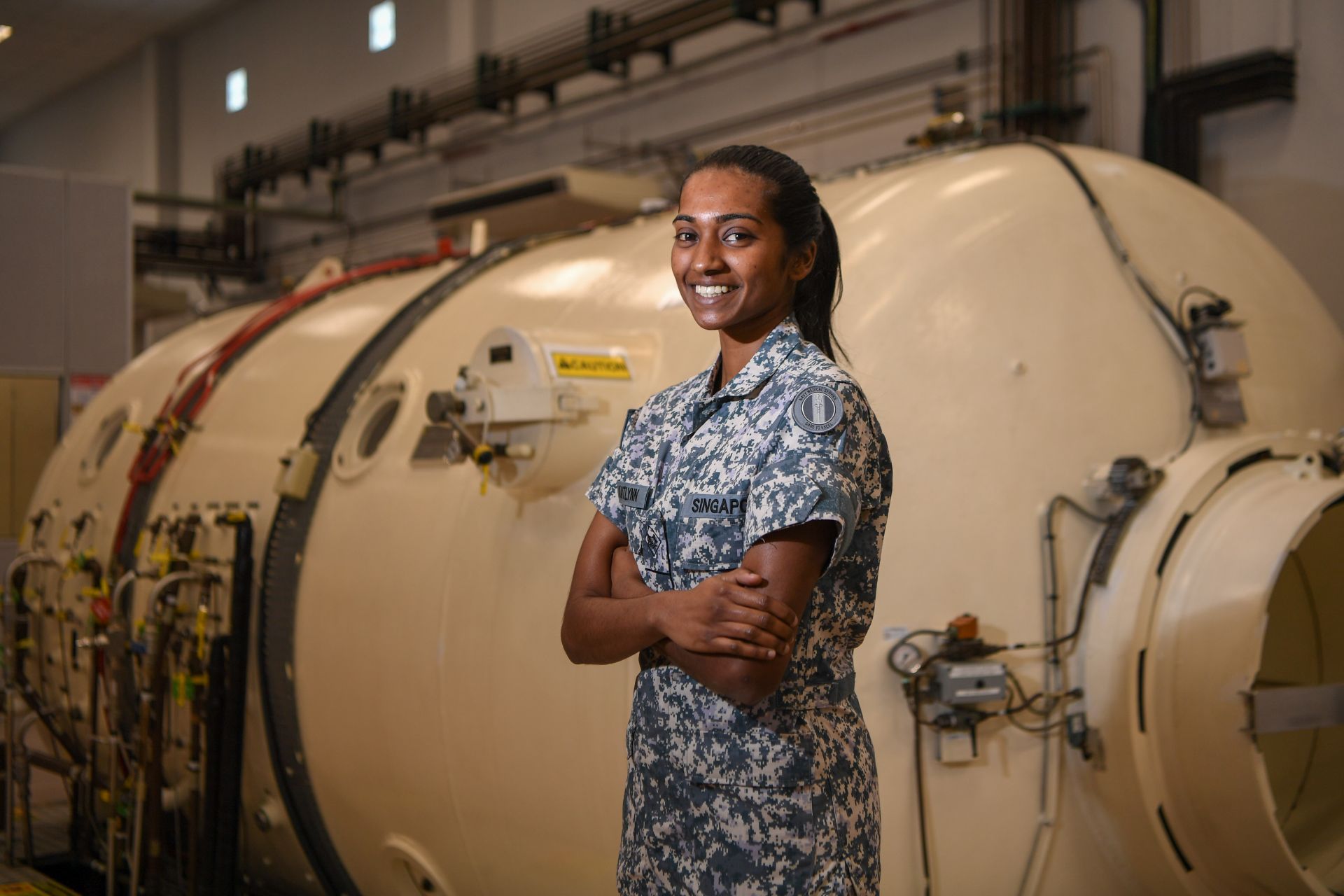
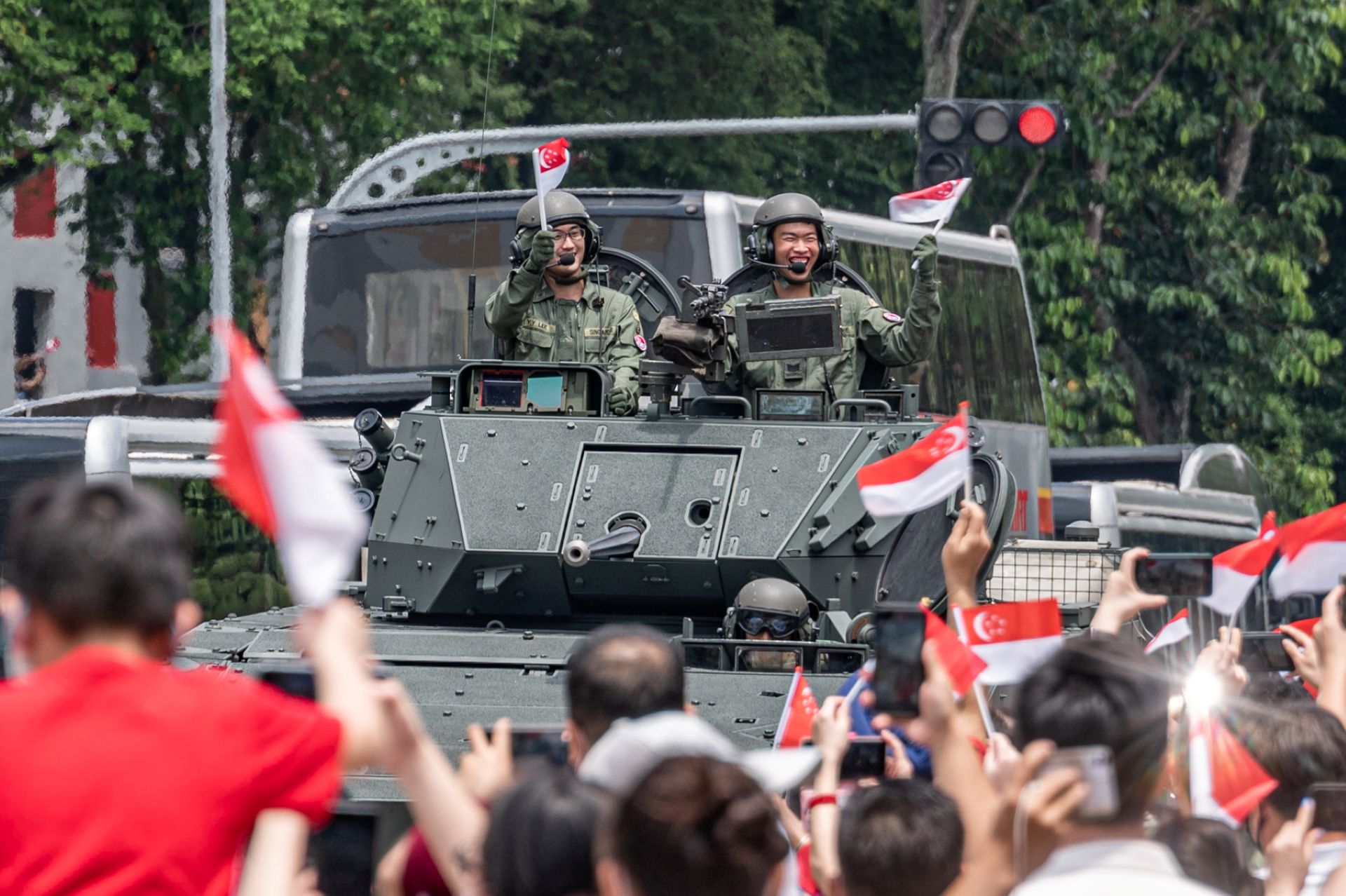
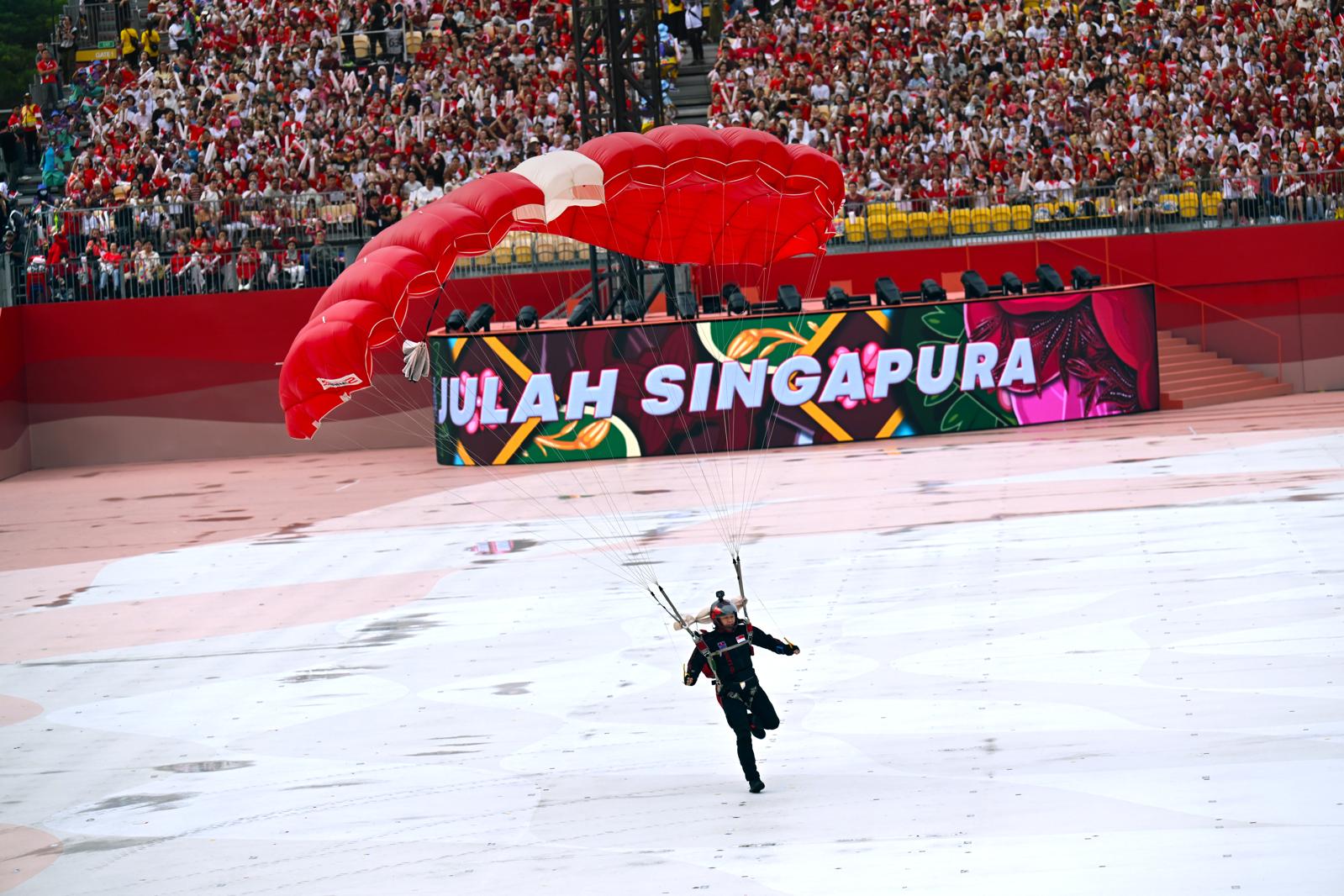
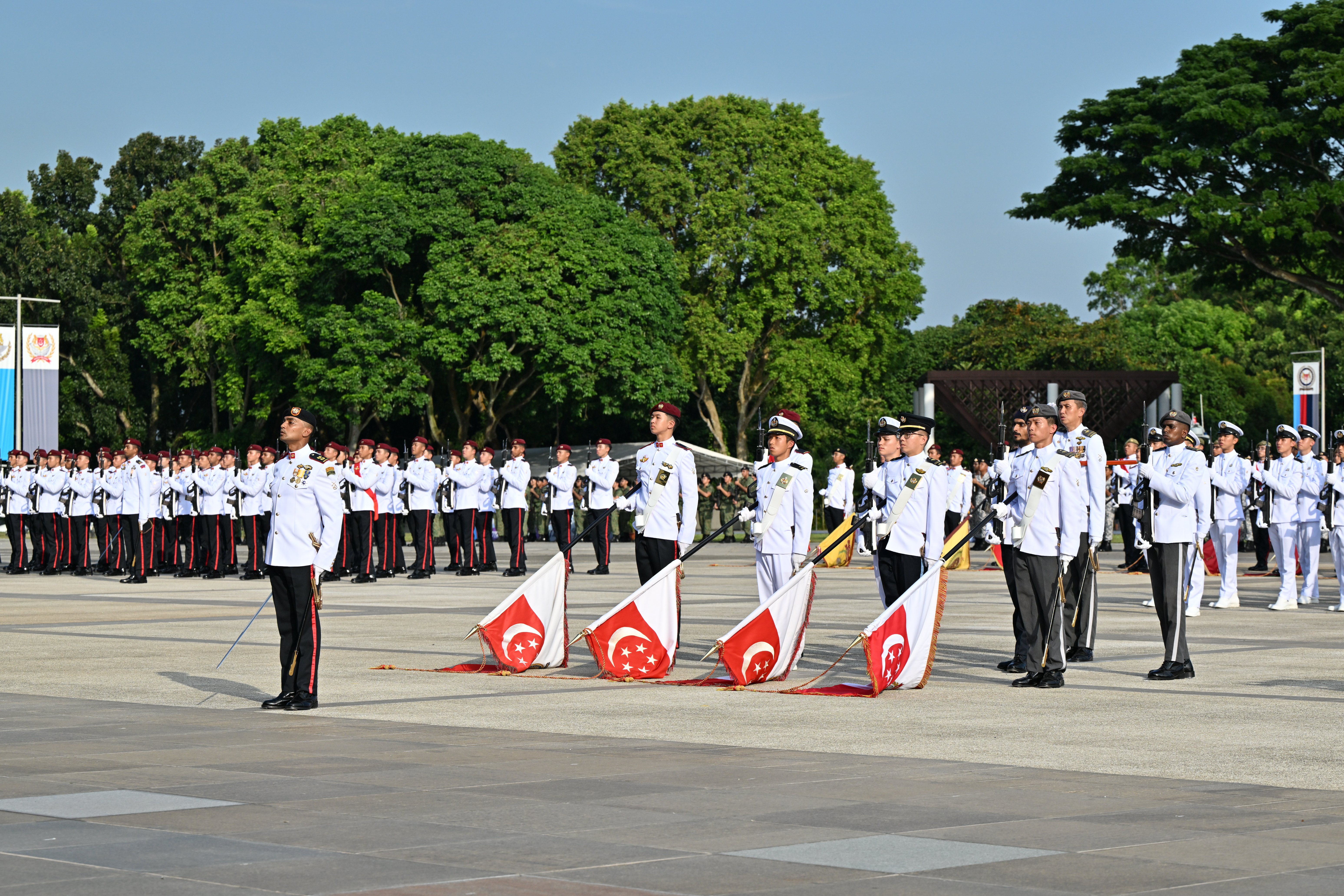
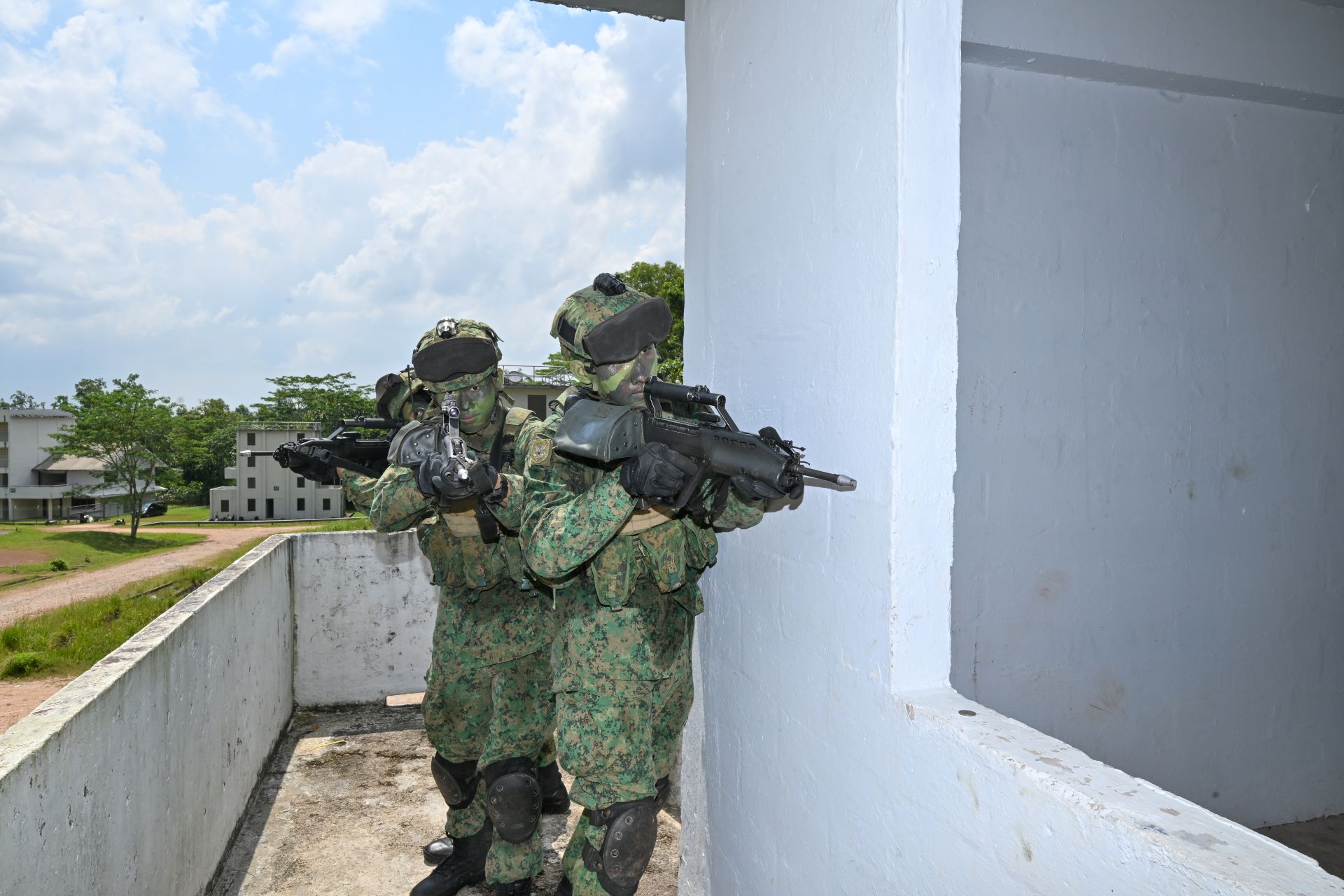
.jpg?sfvrsn=b5383902_1)
.jpg?sfvrsn=4eb1b86e_1)
